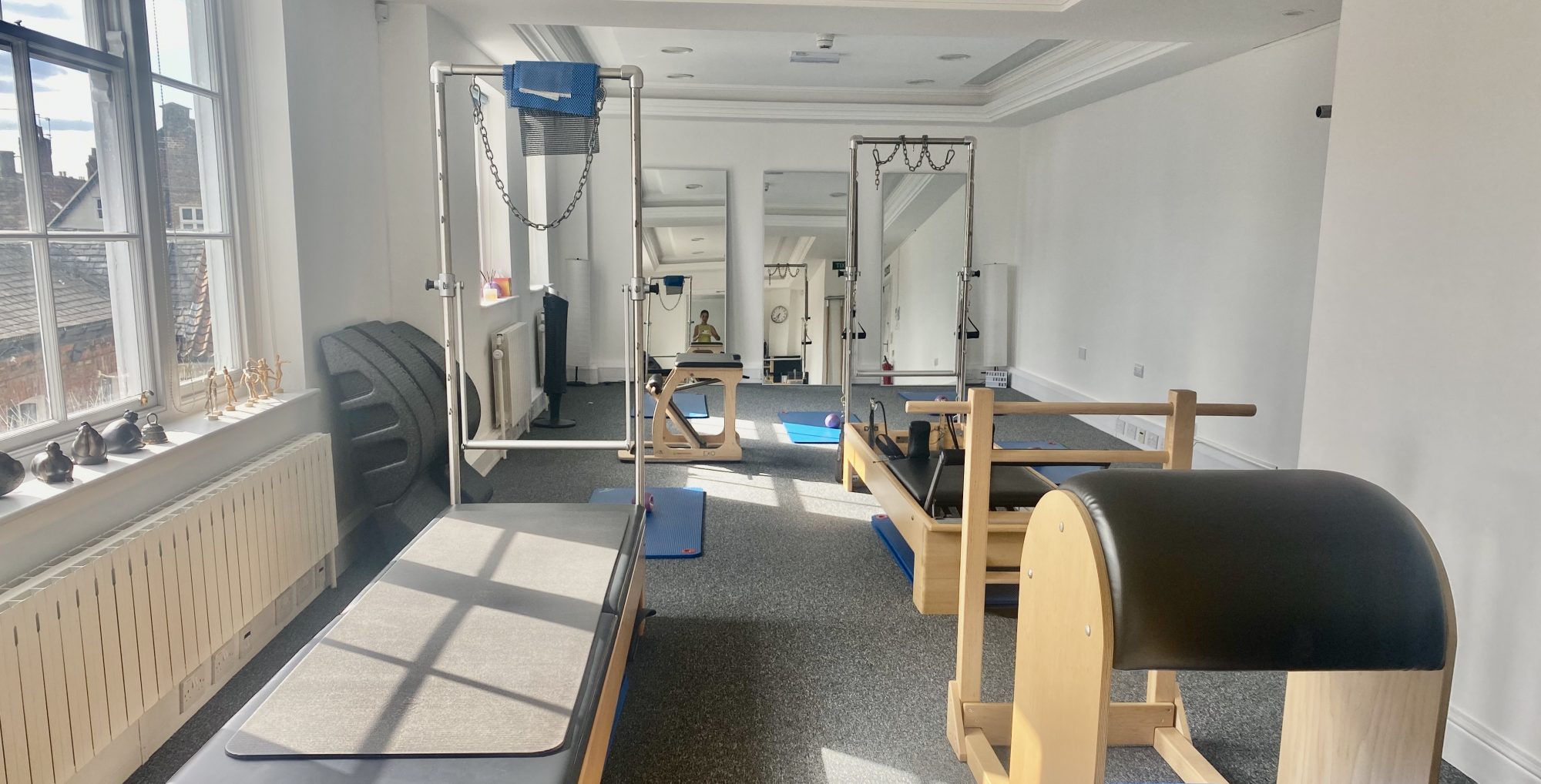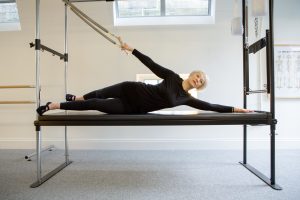A Lifetime’s Work Isn’t Learned In A Weekend
Practicing Pilates regularly brings gradual and positive changes to the body’s strength and flexibility, and enhances our sense of wellbeing too. In your Pilates class you learn how to sense and activate the deep postural muscles that support and stabilise your skeleton, and then to remain aware of posture and alignment through flowing sequences of movement which form the practice of Pilates. Pilates is a Method to learn, with a philosophy and a set of principles, rather than an exercise class.
Joseph Pilates first published his booklet ‘Your Health’ in 1934, “a corrective system of exercising which revolutionises the entire field of physical education”. Ten years later his work ‘Return to Life Through Contrology’ was published, a systematic progressive exercise regime which has evolved into the movement method we now know as ‘Pilates’.
This little booklet outlines the basis of what we now call Matwork, although Joe had been training his students for many years before this using his apparatus, that we now know as the Reformer, the Cadillac , Wunda Chair and the Tower. Many don’t realise that Joe was teaching Reformer work long before the practice of Matwork evolved and that his New York gym was a studio full of specialist apparatus.
Although the “system of corrective exercises” was intended for all, to begin with many of the visitors to ‘Joe’s Gym’ were dancers and athletes. They found the work helped heal the injuries caused by habitual imbalanced movements that plague physical performers. Until the 1990’s, Pilates exercises were still mostly used by the dance community, a clientele who already had a high degree of physical ability. Soon, medical practitioners and physiotherapists began to recommend the Pilates Method to improve bad backs, achey joints and post operational rehab and medical research developed that supported much of what Pilates practitoners already knew: movement heals.
In the 1970’s Alan Herdman, a teacher with London Contemporary Dance was sent to New York to learn the method and bring it back to London to help dancers improve their strength and performance. Several of the dancers who trained with Alan at London Contemporary went on to start their own studios and then to train teachers. Michael King was one of these teachers, along with Gordon Thompson. Alan continues to teach all around the world, as does Michael King, the founder of MK Pilates International. As well as a being a busy Pilates studio, York Pilates Space is a teacher training centre affiliated to MK Pilates International, and a member of the Society for the Pilates Method (SPM).

